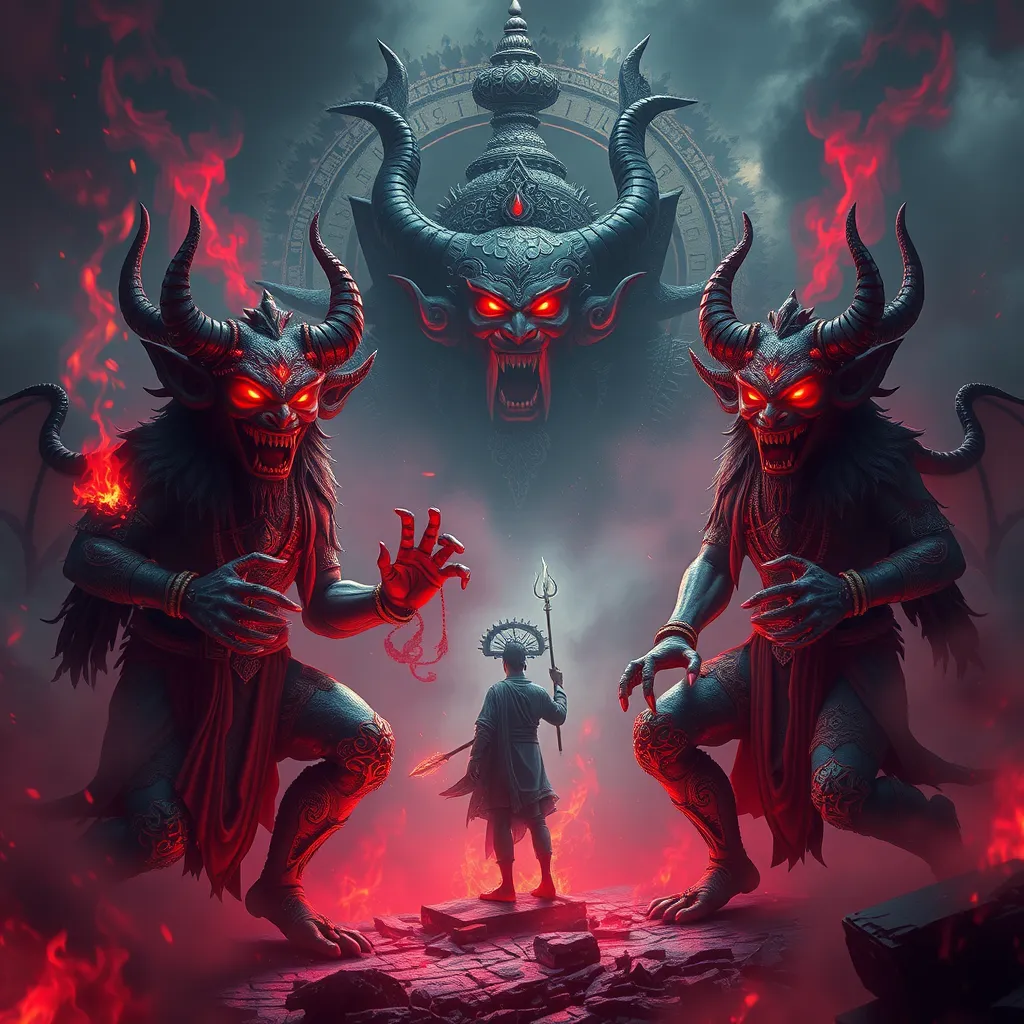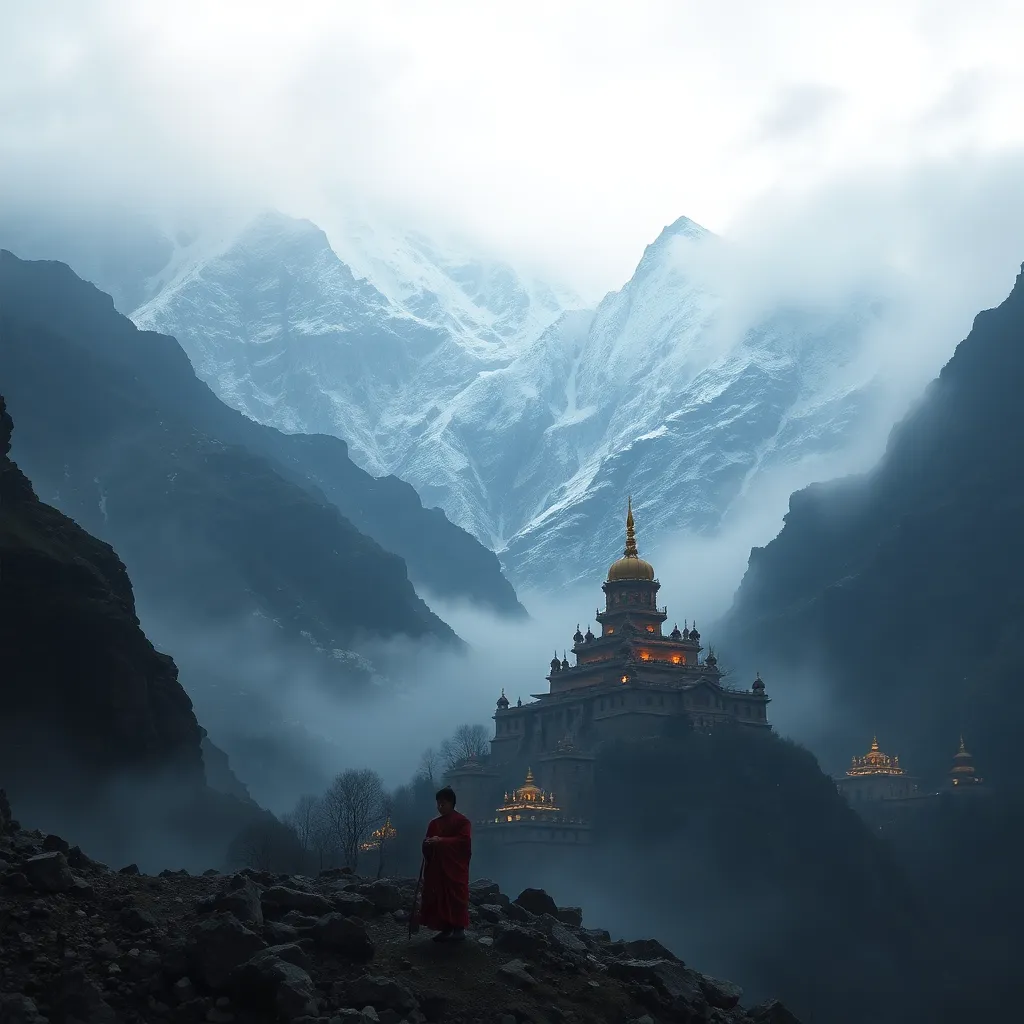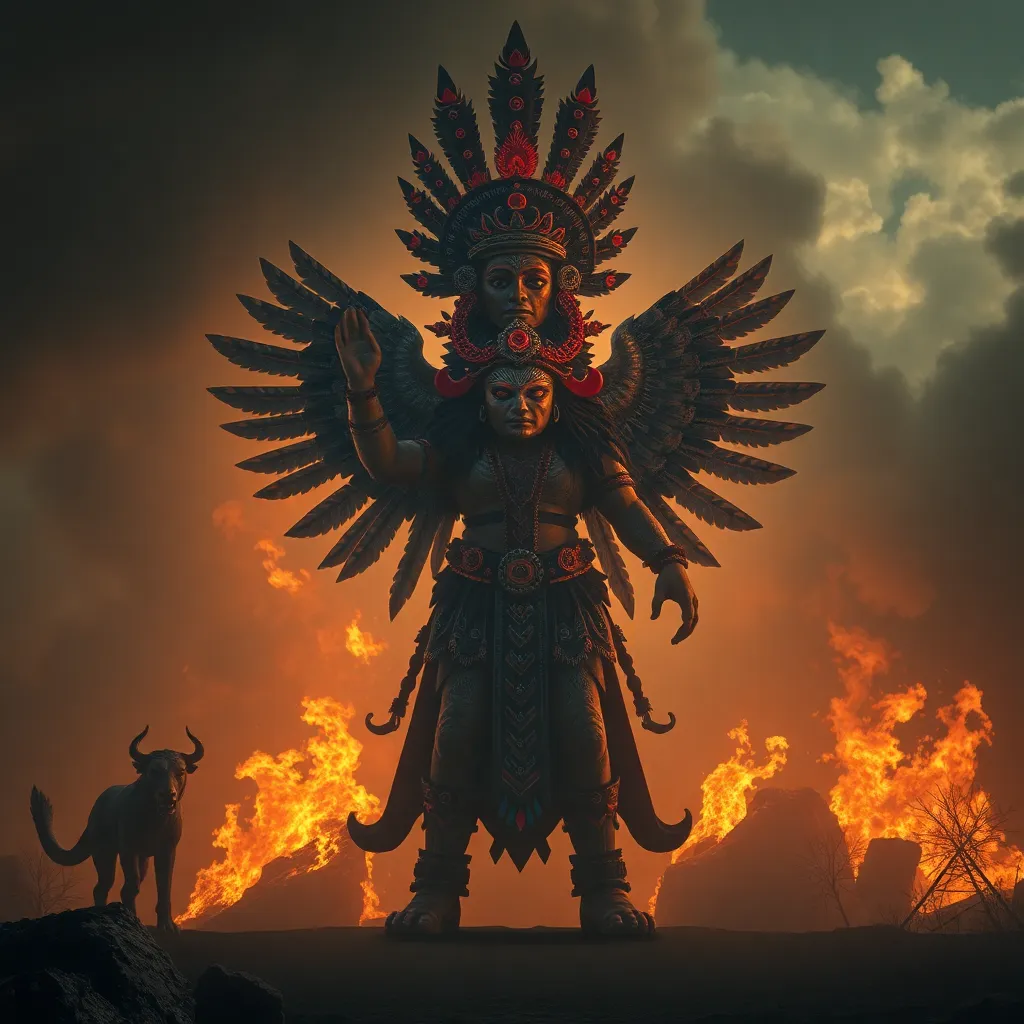The Rakshasa of Hindu Mythology: From Demons to Guardians
I. Introduction
The term Rakshasa refers to a class of supernatural beings in Hindu mythology, often depicted as malevolent spirits or demons. However, their roles and representations are varied and complex, stretching beyond mere antagonism.
In Hindu mythology, Rakshasas are often portrayed as enemies of the gods and protectors of darkness. Yet, there are instances where they emerge as guardians or benevolent figures. This article aims to explore the evolution of Rakshasa from demonic entities to guardians, reflecting their multifaceted nature in the cultural and spiritual narratives of Hinduism.
II. Historical Origins of Rakshasa
The concept of Rakshasa has roots in ancient Indian texts, with mentions dating back to the Vedic period. They are referenced in various scriptures, including the Vedas, Upanishads, and especially in epics such as the Ramayana and Mahabharata.
- Ancient texts: The earliest references to Rakshasas appear in the Rg Veda, where they are described as beings that obstruct the worship of the gods.
- Cultural influences: Over time, regional and cultural variations have influenced their depiction, with some traditions emphasizing their protective aspects.
- Etymology: The term Rakshasa is derived from the Sanskrit root raksha, meaning to protect or to guard, which reflects their dual nature.
III. Characteristics and Traits of Rakshasa
Rakshasas are characterized by a range of physical attributes, magical abilities, and behavioral traits that contribute to their complex representations.
A. Physical attributes and forms
Rakshasas are often depicted as having frightening appearances, with features that may include:
- Large, grotesque bodies
- Sharp fangs and claws
- Multiple heads or arms
- Ability to shapeshift into various forms
B. Magical powers and abilities
These beings are endowed with numerous magical powers, including:
- Illusion and shape-shifting
- Invisibility
- Immortality (or prolonged life)
- Control over nature and elements
C. Behavioral traits: Malevolence vs. benevolence
While Rakshasas are predominantly portrayed as malevolent, their behaviors can also reflect benevolence. This duality is a key aspect of their characterization, making them intriguing figures in Hindu mythology.
IV. Rakshasa in Hindu Epics
The Ramayana and Mahabharata serve as primary sources for understanding the roles and representations of Rakshasas in Hindu mythology.
A. The Ramayana: Key figures and their roles
In the Ramayana, notable Rakshasa figures include:
- Ravana: The ten-headed king of Lanka, who abducted Sita, representing the archetype of evil.
- Surpanakha: Ravana’s sister, whose desire for Rama leads to conflict.
B. The Mahabharata: Rakshasa involvement in the epic
In the Mahabharata, Rakshasas also play significant roles, such as:
- Bhima’s encounter with Hidimba: A Rakshasa who becomes an ally and wife of Bhima, showcasing a protective aspect.
- Ghatotkacha: The son of Bhima and Hidimba, who becomes a hero in the Kurukshetra war.
C. Comparative analysis of Rakshasa portrayals in both epics
While the Ramayana emphasizes the antagonistic nature of Rakshasas, the Mahabharata presents a more nuanced view, where Rakshasas can also be allies and protectors.
V. The Dual Nature: Demons vs. Guardians
The duality of Rakshasas is a central theme in their characterization.
A. Instances of Rakshasa as antagonists
Rakshasas are often depicted as malevolent beings working against the divine order:
- Ravana’s abduction of Sita
- Hiranyakashipu’s tyranny over his subjects
B. Stories of Rakshasa acting as protectors or allies
Conversely, there are instances where Rakshasas are portrayed positively:
- Hidimba’s love for Bhima and subsequent alliance
- Ghatotkacha’s valor in battle
C. The symbolic significance of their duality in mythology
This duality symbolizes the complex nature of good and evil, reflecting the struggles within human nature and the potential for redemption.
VI. Modern Interpretations and Cultural Representations
In contemporary culture, Rakshasas have found a place in literature, films, and art.
A. Rakshasa in contemporary literature and media
Modern adaptations often reinterpret Rakshasas, focusing on their tragic or heroic aspects, leading to a reevaluation of their roles.
B. Artistic depictions in modern culture
Artistic representations often blend traditional imagery with modern aesthetics, shaping public perception.
C. The impact of globalization on the perception of Rakshasa
Globalization has led to a broader understanding of Rakshasa, allowing for cross-cultural interpretations and adaptations.
VII. Spiritual and Philosophical Implications
The tales of Rakshasas carry deep moral and philosophical lessons.
A. The moral lessons associated with Rakshasa tales
Many stories highlight the consequences of pride, desire, and moral corruption, serving as cautionary tales.
B. Rakshasa as reflections of human nature and inner demons
Rakshasas symbolize the inner demons that individuals face, representing the struggle between light and darkness.
C. The relevance of Rakshasa in modern spirituality
In modern spirituality, Rakshasas remind us of the importance of self-awareness and the journey towards inner peace.
VIII. Conclusion
The transformation of Rakshasa in Hindu mythology from demons to guardians reflects a rich tapestry of cultural narratives. Their enduring legacy continues to influence literature, art, and spiritual thought, making them significant figures in understanding the complexities of good and evil. As we explore their stories, we gain insights into the human condition and the eternal struggle between light and darkness.



